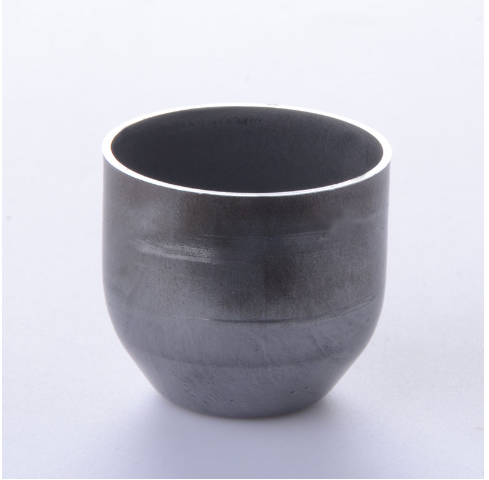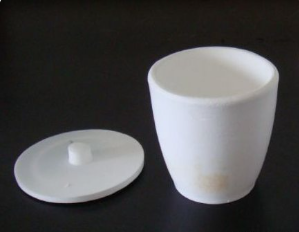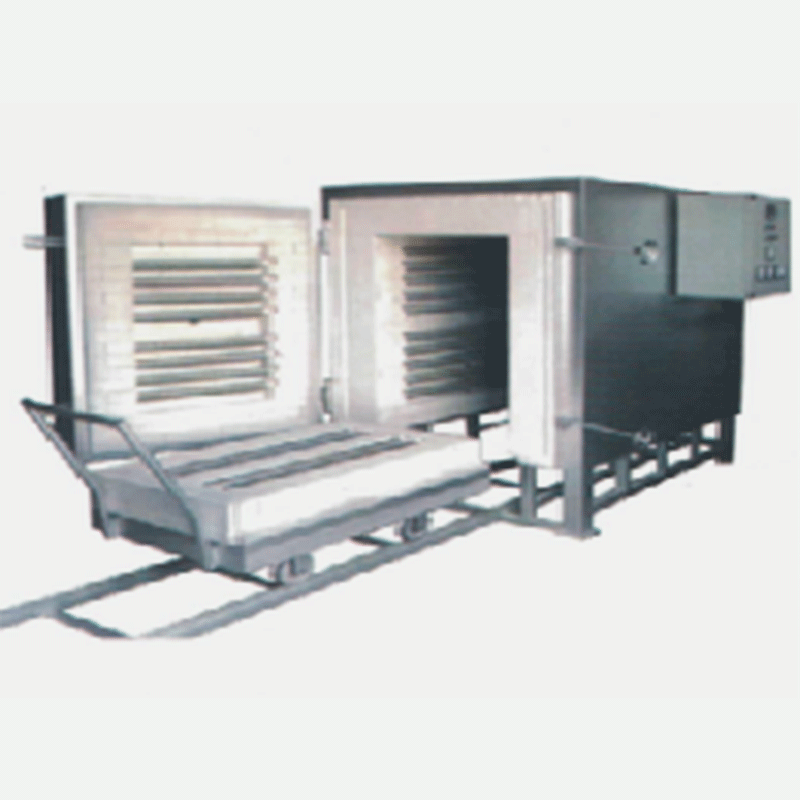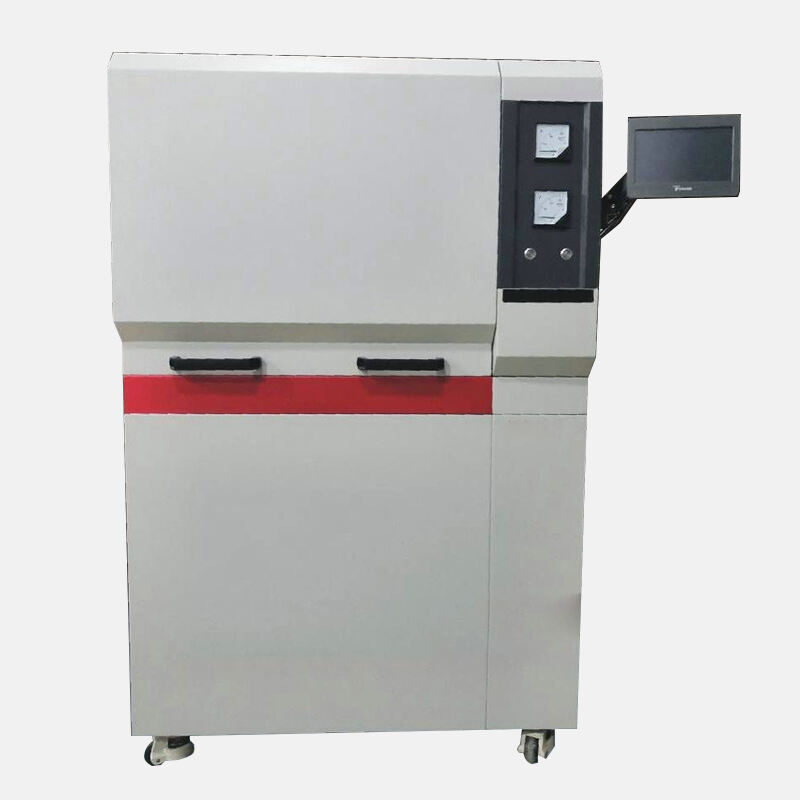Every laboratory has a crucible, do you know how to use it?
Crucible is a vessel or melting pot made of extremely refractory materials (such as clay, quartz, porcelain clay or metals that are difficult to melt). It is mainly used for evaporation, concentration or crystallization of solutions, and burning solid substances.
Crucible and its use method
When solids need to be heated with a high fire, a crucible must be used. When using a crucible, the crucible cover is usually placed obliquely on the crucible to prevent the heated object from jumping out and allow air to enter and exit freely for possible oxidation reactions. Because the bottom of the crucible is very small, it usually needs to be placed on a clay tripod to be directly heated by fire. The crucible can be placed upright or obliquely on the iron tripod, and can be placed by yourself according to the needs of the experiment. After the crucible is heated, it should not be placed on a cold metal table immediately to avoid it from breaking due to rapid cooling. It should not be placed on a wooden table immediately to avoid scalding the table or causing a fire. The correct way is to leave it on the iron tripod to cool naturally, or place it on an asbestos net to cool slowly. Please use crucible tongs to take the crucible.
1. Main uses:
(1) Evaporation, concentration or crystallization of solutions.
(2) Burning solid substances.
2. Precautions for use:
(1) Can be heated directly, cannot be cooled suddenly after heating, and can be removed with crucible tongs.
(2) Place the crucible on an iron tripod when heated.
(3) Stir during evaporation; use residual heat to evaporate when almost dried.
3. Crucibles can be divided into three categories: graphite crucibles, clay crucibles and metal crucibles.
Detailed description of the crucibles commonly used in laboratories
01 Platinum crucible

Platinum, also known as white gold, is more expensive than gold. It is often used because of its many excellent properties. Platinum has a melting point of up to 1774°C and stable chemical properties. It does not undergo chemical changes after burning in the air, nor does it absorb moisture. Most chemical reagents have no corrosive effect on it.
1. Characteristics:
The ability to resist corrosion by hydrofluoric acid and molten alkali metal carbonates is an important property of platinum that distinguishes it from glass and porcelain. Therefore, it is often used for precipitation burning weighing, hydrofluoric acid melting samples and carbonate melting treatment. Platinum is slightly volatile at high temperatures and needs to be corrected after a long burning time. Platinum with an area of 100 cm2 loses about 1 mg when burned at 1200℃ for 1 hour. Platinum is basically non-volatile below 900℃.
2. The use of platinum utensils should comply with the following rules:
(1) Strict systems should be established for the collection, use, consumption and recycling of platinum.
(2) Platinum is soft, even alloys containing a small amount of rhodium and iridium are relatively soft, so do not use too much force when picking up platinum utensils to avoid deformation. When removing the melt, do not use sharp objects such as glass rods to scrape from the platinum utensils to avoid damaging the inner wall; do not suddenly put hot platinum utensils into cold water to avoid cracking. Deformed platinum crucibles or vessels can be corrected with a water model that matches their shape (but the brittle platinum carbide parts should be corrected with uniform force).
(3) When heating platinum vessels, they cannot come into contact with any other metal, because platinum easily forms alloys with other metals at high temperatures. Therefore, platinum crucibles must be placed on a platinum tripod or a support made of ceramic, clay, quartz, etc. for burning. They can also be placed on an electric heating plate or electric furnace with an asbestos board for heating, but they cannot come into direct contact with iron plates or electric furnace wires. The crucible tongs used should be covered with platinum heads. Nickel or stainless steel tongs can only be used at low temperatures.
3. Cleaning methods for platinum vessels:
If platinum vessels have spots, they can be treated with hydrochloric acid or nitric acid alone. If this is ineffective, potassium pyrosulfate can be melted in the platinum vessel at a lower temperature for 5 to 10 minutes, the molten material can be poured out, and the platinum vessel can be boiled in a hydrochloric acid solution. If it still doesn't work, you can try melting with sodium carbonate, or gently rub with damp fine sand (passing through a 100-mesh sieve, i.e., 0.14 mm mesh).
02 Gold crucible

Gold is cheaper than platinum and is not corroded by alkali metal hydroxides and hydrofluoric acid, so it is often used to replace platinum utensils. However, gold has a lower melting point (1063°C), so it cannot withstand high-temperature burning and must generally be used below 700°C. Ammonium nitrate has a significant corrosive effect on gold, and aqua regia cannot come into contact with gold utensils. The principles for using gold utensils are basically the same as those for platinum utensils.
03 Silver crucible

1. Characteristics
Silver utensils are relatively cheap and are not corroded by potassium (sodium) hydroxide. In the molten state, they are only slightly corroded at the edge close to the air.
The melting point of silver is 960°C, and the operating temperature is generally not more than 750°C. It cannot be heated directly on fire. After heating, a layer of silver oxide will form on the surface, which is unstable at high temperatures but stable below 200°C. The silver crucible just taken out of high temperature must not be cooled with cold water immediately to prevent cracks.
Silver easily reacts with sulfur to form silver sulfide, so sulfur-containing substances cannot be decomposed and burned in the silver crucible, and alkaline sulfiding agents are not allowed to be used.
Molten metal salts of aluminum, zinc, tin, lead, mercury, etc. can make the silver crucible brittle. Silver crucibles are not used to melt borax.
When using sodium peroxide flux, it is only suitable for sintering, not melting.
2. Leaching and washing
Do not use acid when leaching the molten material, especially concentrated acid. When cleaning silver utensils, slightly boiling dilute hydrochloric acid (1+5) can be used, but it is not suitable to heat the utensils in the acid for a long time.
The mass of the silver crucible will change after burning, so it is not suitable for weighing precipitation.
04 Nickel Crucible

The melting point of nickel is 1450℃, and it is easily oxidized when burned in the air, so nickel crucibles cannot be used for burning and weighing precipitation.
Nickel has good resistance to erosion by alkaline substances, so it is mainly used for melting treatment of alkaline flux in the laboratory.
1. Temperature control
Alkaline fluxes such as sodium hydroxide and sodium carbonate can be melted in a nickel crucible, and their melting temperature generally does not exceed 700°C. Sodium oxide can also be melted in a nickel crucible, but the temperature must be lower than 500°C and the time must be short, otherwise the corrosion will be serious, increasing the content of nickel salts brought into the solution and becoming impurities in the determination.
2. Special attention
Acidic solvents such as potassium pyrosulfate and potassium hydrogen sulfate and solvents containing sulfides cannot be used in nickel crucibles. If sulfur-containing compounds are to be melted, they should be carried out in an oxidizing environment with excessive sodium peroxide. Metal salts of aluminum, zinc, tin, lead, etc. in a molten state can make nickel crucibles brittle. Silver, mercury, vanadium compounds and borax cannot be burned in nickel crucibles. New nickel crucibles should be burned at 700°C for several minutes before use to remove oil stains and form an oxide film on their surface to extend their service life. The treated crucibles should be dark green or gray-black. After that, wash with boiling water before each use. If necessary, add a small amount of hydrochloric acid and boil for a while, then wash with distilled water and dry before use.
05 Iron crucible

The use of iron crucible is similar to that of nickel crucible. It is not as durable as nickel crucible, but it is cheap and more suitable for melting sodium peroxide, which can replace nickel crucible.
Iron crucible or low silicon steel crucible should be passivated before use. First soak it in dilute hydrochloric acid, then gently wipe it with fine sandpaper, rinse it with hot water, then soak it in a mixed solution of 5% sulfuric acid + 1% nitric acid for several minutes, then wash it with water, dry it, and burn it at 300~400℃ for 10min.
06 Polytetrafluoroethylene crucible

1. Characteristics
Polytetrafluoroethylene is a thermoplastic plastic with white color, waxy feel, stable chemical properties, good heat resistance, good mechanical strength, and a maximum working temperature of 250℃.
Generally used below 200℃, it can replace platinum utensils to handle hydrofluoric acid.
Except for molten sodium and liquid fluorine, it can resist corrosion from all concentrated acids, alkalis and strong oxidants. It does not change even when boiled in aqua regia. It can be called the "king" of plastics in terms of corrosion resistance.
Polytetrafluoroethylene crucibles with stainless steel covers are used in pressurized heating treatment of mineral samples and digestion of biological materials. Polytetrafluoroethylene has good electrical insulation properties and can be cut and processed.
2. Special attention
But it decomposes rapidly above 415℃ and releases toxic perfluoroisobutylene gas.
07Porcelain crucible

The porcelain utensils used in laboratories are actually glazed pottery. They have a high melting point (1410℃) and can withstand high temperature burning. For example, porcelain crucibles can be heated to 1200℃. After burning, their mass changes very little, so they are often used for burning and weighing precipitation. High-type porcelain crucibles can handle samples under air-tight conditions.
Notes:
The thermal expansion coefficient of porcelain utensils used in laboratories is (3~4)×10-6. Thick-walled porcelain vessels should avoid sudden temperature changes and uneven heating during high-temperature evaporation and burning operations to prevent cracking.
Porcelain vessels are more stable to chemical reagents such as acids and alkalis than glass vessels, but they cannot come into contact with hydrofluoric acid. Porcelain crucibles are not resistant to corrosion by caustic soda and sodium carbonate, especially their melting operations.
Using some substances that do not react with porcelain, such as MgO and C powder, as fillers, and using quantitative filter paper to wrap the alkaline flux in the porcelain crucible to melt and treat silicate samples can partially replace platinum products. Porcelain vessels have strong mechanical properties and are cheap, so they are widely used.
08Corundum crucible

Natural corundum is almost pure alumina. Artificial corundum is made by high-temperature sintering of pure alumina. It is resistant to high temperatures, has a melting point of 2045℃, has high hardness, and has considerable corrosion resistance to acids and alkalis.
Precautions
Corundum crucibles can be used for melting and sintering of certain alkaline fluxes, but the temperature should not be too high and the time should be as short as possible. In some cases, they can replace nickel and platinum crucibles, but they cannot be used when measuring aluminum and aluminum interferes with the measurement.
09Corundum crucibles

Transparent quartz glass is made by high-temperature melting of natural colorless and transparent crystal. Translucent quartz is made of natural pure vein quartz or quartz sand. It is translucent because it contains many bubbles that are not exhausted during melting. The physical and chemical properties of transparent quartz glass are better than those of translucent quartz. It is mainly used to manufacture laboratory glass instruments and optical instruments.
The thermal expansion coefficient of quartz glass is very small (5.5×10-7), which is only one-fifth of that of super hard glass.
Therefore, it can withstand rapid heating and cooling. After the transparent quartz glass is heated to red heat, it will not burst when placed in cold water.
The softening temperature of quartz glass is 1650℃, which has high temperature resistance.
Quartz crucibles are often used for melting acidic fluxes and sodium thiosulfate, and the use temperature should not exceed 1100℃. It has very good acid resistance. Except for hydrofluoric acid and phosphoric acid, any concentration of acid rarely reacts with quartz glass even at high temperatures.
Quartz glass is not resistant to corrosion by hydrofluoric acid, but phosphoric acid can also react with it above 150℃. Strong alkaline solutions including alkali metal carbonates can also corrode quartz, but the corrosion is slow at room temperature, and the corrosion is accelerated when the temperature rises.
Quartz glass instruments are similar to glass instruments in appearance, colorless and transparent, but more expensive, more brittle, and easy to break than glass instruments. Special care should be taken when using them. They are usually stored separately from glass instruments and properly kept.
Use of crucibles in analytical chemistry
Ceramic crucibles with a capacity of 10 to 15 ml are commonly used in quantitative analysis of analytical chemistry. It is generally used to make the analyte fully react at high temperature, and then quantitatively measure it by the difference in mass before and after.
Ceramics are hygroscopic, so in order to reduce errors, the crucible should be strictly dried before use and weighed on an analytical balance. Sometimes the analyte is filtered with ash-free filter paper and placed in the crucible together with the filter paper; this filter paper completely decomposes in a high temperature environment and does not affect the result. After high temperature treatment, the crucible and its contents are dried and cooled in a special desiccator and then weighed, using clean crucible tongs throughout the process.
Recommended Products
Hot News
-
What are the maintenance measures for air permeability tester?
2025-04-02
-
What is the difference between the one-key pre-oxidation alloy melting machine and the ordinary melting machine?
2025-03-25
-
Craftsmanship creates quality! Nanyang JZJ Testing Company successfully delivered 10set customized high-temperature muffle furnaces to help the high-quality development of the refractory industry
2025-03-17
-
How to open the door of a high temperature muffle furnace at high temperature
2025-03-11
-
How to control the heating temperature and time of the multi-function melting machine?
2025-03-05
-
The biggest advantage of the automatic melting machine fusion method
2025-02-25
-
Together we build a quality future - South African customers purchased 3set of T6 melting machines in batches and delivered them successfully, and efficient services help global mining upgrades
2025-02-22
-
Detailed analysis of the advantages of using high-frequency induction multifunctional fusion machine
2025-02-18
-
Indian customers mailed samples to our company
2025-02-11
-
How to avoid uneven temperature distribution in muffle furnace?
2025-02-06

 EN
EN
 AR
AR
 BG
BG
 FR
FR
 DE
DE
 HI
HI
 IT
IT
 PL
PL
 PT
PT
 RU
RU
 ES
ES
 TL
TL
 IW
IW
 ID
ID
 UK
UK
 VI
VI
 TH
TH
 TR
TR
 FA
FA
 MS
MS
 UR
UR
 BN
BN
 KM
KM
 LO
LO
 PA
PA
 MY
MY
 KK
KK




















